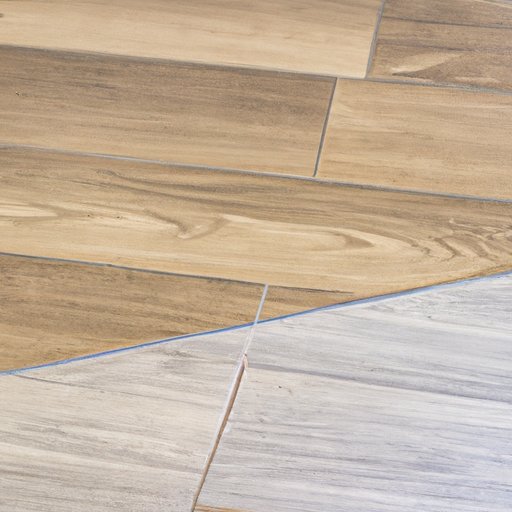I. Introduction
Vinyl flooring has become increasingly popular due to its affordability, durability, and aesthetic appeal. If you’re considering starting a vinyl flooring project, this article is for you. We will provide a comprehensive guide on how to start your vinyl flooring project, from essential tools to finishing touches.
II. 5 Simple Steps to Start Your Vinyl Flooring Project
The first step in your vinyl flooring project is to gather essential tools and materials. You’ll need a utility knife, a tape measure, a straight edge, a hand roller, and vinyl adhesive. Next, measure the area to determine how much flooring you’ll need. Make sure to prepare the subfloor by removing debris and filling any cracks or holes.
Once the subfloor is ready, it’s time to start installing the vinyl flooring. Cut the vinyl to the appropriate size using a utility knife. Then, apply vinyl adhesive to the subfloor and carefully lay the vinyl in place. Use a hand roller to ensure the vinyl adheres to the subfloor. Finally, cut off any excess vinyl and install baseboards or trim to complete the project.
III. Top 3 Methods for Preparing Your Subfloor for Vinyl Flooring
Preparation is key to ensuring the longevity of your vinyl flooring. A properly prepared subfloor will prevent the vinyl from warping or cracking over time. Before starting your project, make sure to level any uneven areas using a self-leveling compound. If there are any cracks or holes in the subfloor, fill them with a patching compound and smooth the surface.
It’s also important to ensure the subfloor is clean before installing the vinyl. Any debris or dirt can compromise the adhesive and affect the performance of the flooring over time. Vacuum or sweep the area thoroughly before starting the installation process.
IV. The Pros and Cons of Going the DIY Route with Vinyl Flooring
One of the main benefits of taking the DIY approach to vinyl flooring is the cost-saving factor. Hiring a professional can be expensive, and doing it yourself can save you a significant amount of money. Additionally, the flexibility to work on your project at your own pace and the satisfaction of completing a DIY project can be rewarding.
However, there are also potential drawbacks to consider. Without proper expertise, mistakes can be costly and time-consuming. It’s important to gauge your experience level and determine whether a professional may be necessary. Additionally, the cost of tools and materials can add up and may not be worth the effort if the final result is not satisfactory.
V. Vinyl Plank vs. Sheet Flooring: Which Option Is Right For You?
When it comes to vinyl flooring, there are two main options to consider: vinyl plank flooring and sheet flooring. Vinyl plank flooring is designed to look like hardwood flooring and comes in individual planks. Sheet flooring, on the other hand, comes in large rolls and is typically less expensive.
While both options have their pros and cons, the main differences lie in aesthetics, durability, and ease of installation. Vinyl plank flooring tends to look more realistic and has a longer lifespan than sheet flooring. However, sheet flooring tends to be easier to install and is more budget-friendly.
VI. 5 Budget-Friendly Tips for Installing Vinyl Flooring in a Small Space
If you’re working on a vinyl flooring project in a smaller space, there are a few budget-friendly tips to keep in mind. Maximize the use of materials to avoid unnecessary waste, and consider purchasing remnants or discontinued vinyl to save money. Avoid extravagant or unnecessary designs and opt for a simpler, functional result.
It’s also important to shop around and compare prices before committing to a purchase. Look for sales or discounts, and consider purchasing supplies in bulk for a better deal. Finally, consider doing the installation yourself to save on labor costs.
VII. Conclusion
A well-executed vinyl flooring project can transform the look and feel of a room while adding value to your home. By following these tips and tricks, you can tackle your vinyl flooring project with confidence and achieve outstanding results. Remember to properly prepare the subfloor and take your time to ensure a flawless finish. With a little patience and effort, you can enjoy beautiful, durable vinyl flooring for years to come.
(Note: Is this article not meeting your expectations? Do you have knowledge or insights to share? Unlock new opportunities and expand your reach by joining our authors team. Click Registration to join us and share your expertise with our readers.)
